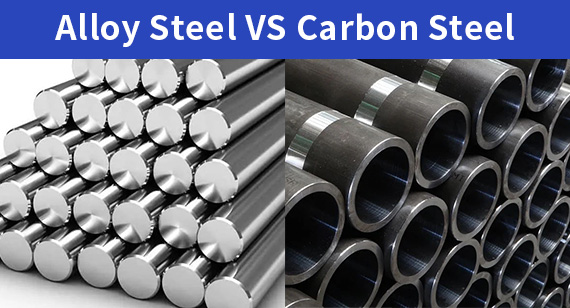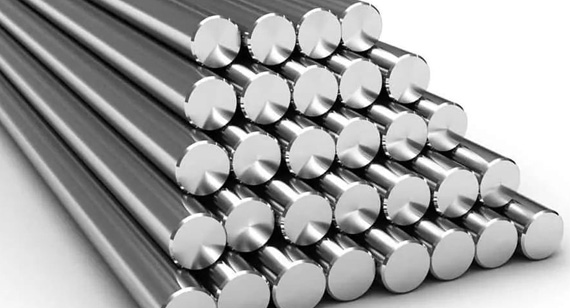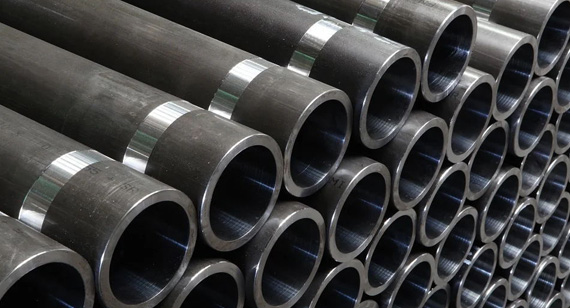15 years one-stop China custom CNC machining parts factory
 235 |
Published by VMT at Jul 10 2024
235 |
Published by VMT at Jul 10 2024
In the field of CNC machining parts manufacturing, selecting the right material is one of the key factors to ensure product quality and performance. Alloy steel and carbon steel are two common metal materials, each with unique physical and chemical properties and a wide range of applications. This article aims to help readers understand the differences and distinctions between alloy steel and carbon steel through detailed comparative analysis, as well as how to choose the right material for different application scenarios.

Definition
Alloy steel is steel that is made by adding one or more alloying elements (such as chromium, nickel, molybdenum, vanadium, etc.) to carbon steel. The addition of these alloying elements not only changes the chemical composition of the steel but also significantly affects its microstructure and performance.
Types
There are various types of alloy steel, including but not limited to stainless steel, high-speed steel, tool steel, and heat-resistant steel. Each type of alloy steel has its specific chemical composition, heat treatment process, and performance characteristics to meet different engineering needs.
Applications
Due to its excellent properties, alloy steel is widely used in various fields. Stainless steel is known for its outstanding corrosion resistance and is essential in industries such as food processing, medical devices, and architectural decoration. High-speed steel, with its high hardness and red hardness, is preferred for cutting tools and mold manufacturing. Tool steel and heat-resistant steel, with their high wear resistance, toughness, and good high-temperature performance, play key roles in mechanical manufacturing, energy, and chemical industries.

Definition
Carbon steel is an iron-carbon alloy with a carbon content between 0.0218% and 2.11%. Depending on the carbon content, carbon steel can be divided into low carbon steel, medium carbon steel, and high carbon steel, each with unique physical and chemical properties.
Types
Low carbon steel has good toughness and weldability, and is commonly used to manufacture plates, pipes, and profiles. Medium carbon steel, with its higher strength and hardness, is suitable for making mechanical parts and structural components. High carbon steel, due to its high hardness and wear resistance, is used for making tools and springs.
Applications
Carbon steel is widely used in manufacturing due to its low cost and good processing performance. From automotive manufacturing to building structures, from pipeline engineering to daily necessities, carbon steel plays an important role. In CNC machining parts manufacturing, carbon steel is an indispensable basic material.

Cost
Alloy steel generally costs more than carbon steel due to the addition of alloying elements. This makes carbon steel more competitive in cost-sensitive applications.
Applications
Alloy steel, with its superior properties, is suitable for more high-end and demanding working environments. For instance, stainless steel performs well in highly corrosive environments, while high-speed steel is ideal for high-speed cutting and heavy-load conditions. In contrast, carbon steel has a broader range of applications but may require additional protection measures in extreme environments.
Element Composition
The main difference between alloy steel and carbon steel lies in their element composition. Alloy steel contains other alloying elements besides iron and carbon, whereas carbon steel mainly consists of iron and carbon. The addition of alloying elements is key to improving the performance of alloy steel.
Corrosion Resistance
Alloy steel, especially stainless steel, typically has excellent corrosion resistance. In contrast, carbon steel has relatively poor corrosion resistance and tends to rust in humid or corrosive environments. Therefore, in applications requiring high corrosion resistance, alloy steel is a better choice.
Mechanical Properties
The mechanical properties of alloy steel and carbon steel vary depending on their types and heat treatment processes. Generally, alloy steel outperforms carbon steel in terms of hardness, strength, and toughness. However, this does not mean that carbon steel is inferior in all aspects; it may be more advantageous in certain applications due to its good processing performance and cost-effectiveness.
Weldability and Machinability
The weldability and machinability of alloy steel and carbon steel also vary depending on their types and processes. Some alloy steels, such as stainless steel, have good weldability but are more challenging to machine. Carbon steel, on the other hand, typically has better machinability and weldability. However, with the advancement of modern processing technology, many alloy steel materials that were previously difficult to process are now widely used.
Advantages of Alloy Steel:
Excellent mechanical properties and corrosion resistance,suitable for high-end, demanding working environments,performance can be adjusted through heat treatment to meet diverse needs,some alloy steels (such as stainless steel) have good aesthetics and hygiene properties.
Disadvantages of Alloy Steel:
Higher production costs.Some alloy steels are more challenging to machine and require advanced equipment and processes. Certain alloying elements may be harmful to humans and require attention to environmental and safety issues.
Advantages of Carbon Steel:
Low cost and easy to obtain. Good processing performance, easy to form and weld. Wide range of applications and diverse product types. Excellent performance in specific applications (such as toughness and weldability of low carbon steel).
Disadvantages of Carbon Steel:
Relatively poor corrosion resistance, prone to rust in humid or corrosive environments, requiring surface treatment to enhance corrosion resistance.
Limited performance in extreme environments, such as high or low temperatures, necessitating the use of higher-grade materials.
May not meet requirements in applications requiring high strength, hardness, or special mechanical properties.
As an industry-leading CNC machining service provider, VMT CNC Machining Factory is dedicated to providing high-quality, high-efficiency alloy steel and carbon steel CNC machining parts. We have advanced CNC machining equipment, including high-precision milling machines, lathes, grinders, etc., to meet various demands from simple to complex, and from small-batch to mass production.
Our team consists of experienced engineers and technicians who are proficient in the processing technology and characteristics of various alloy steels and carbon steels, and can provide customized processing solutions for customers. Whether it is precision parts processing or complex mold manufacturing, we can ensure that products meet customer requirements with exquisite craftsmanship and strict quality control.

When choosing between alloy steel and carbon steel for CNC machining parts, consider the following factors:
Cost: Evaluate the price differences between alloy steel and carbon steel based on the project's budget and cost requirements to choose the more cost-effective material.
Application Scenario: Consider the usage environment and requirements of the parts, such as corrosion resistance, strength, hardness, toughness, etc., to select the appropriate material. For example, stainless steel and other alloy steels are better choices in environments requiring high corrosion resistance, while carbon steel may be more suitable in cost-sensitive applications with less demanding performance requirements.
Machinability: Assess the machining difficulty and cost of alloy steel and carbon steel based on the complexity of the parts and processing requirements. Some alloy steels, although superior in performance, are more challenging to machine, requiring consideration of the investment in equipment, processes, and time.
Processing Waste: Consider the amount of waste generated during processing and the cost of disposal. In some cases, choosing materials that are easier to machine and generate less waste can reduce overall costs.
Aesthetic Requirements: For parts that require specific appearance or surface treatment, such as the mirror-polished effect of stainless steel or the sandblasted treatment of carbon steel, choose the appropriate material based on aesthetic requirements.
| Alloy Steel | Carbon Steel | |
| Corrosion resistance | Good | Low |
| Hardness | Low | High |
| Strength | Low | High |
| Toughness | Low | High |
| Malleability | Low | High |
| Weldability | Low | High |
| Ductility | High | Low |
| Cost | Expensive | Expensive |
Alloy steel and carbon steel, as common metal materials in CNC machining parts manufacturing, each have unique advantages and applicable ranges. When selecting materials, comprehensively consider factors such as cost, application scenarios, machinability, processing waste, and aesthetic requirements to make the most reasonable decision. With advanced equipment and a professional team, VMT CNC Machining Factory can provide customers with high-quality alloy steel and carbon steel CNC machining services to meet diverse needs.
Which is better, alloy steel or carbon steel?
There is no absolute answer to this question because both alloy steel and carbon steel have their advantages and disadvantages and are suitable for different application scenarios. The choice should be made based on specific needs.
Which is stronger, alloy steel or carbon steel?
Generally, alloy steel tends to have higher hardness and strength than carbon steel, but the specific properties depend on the type and content of alloying elements and heat treatment processes.
How to distinguish between alloy steel and carbon steel?
While it may be difficult to distinguish between alloy steel and carbon steel based on appearance alone, chemical composition analysis, metallographic observation, and mechanical property testing can be used for identification. Additionally, the material's use and performance characteristics can provide initial clues.
Summary
Through a detailed comparison and analysis of alloy steel and carbon steel, this article helps readers understand the differences and distinctions between these two materials and the principles of selection for different application scenarios. It also introduces the professional capabilities and service advantages of VMT CNC Machining Factory in the field of alloy steel and carbon steel CNC machining. This article aims to provide valuable references and insights for readers when choosing materials for CNC machining parts.
